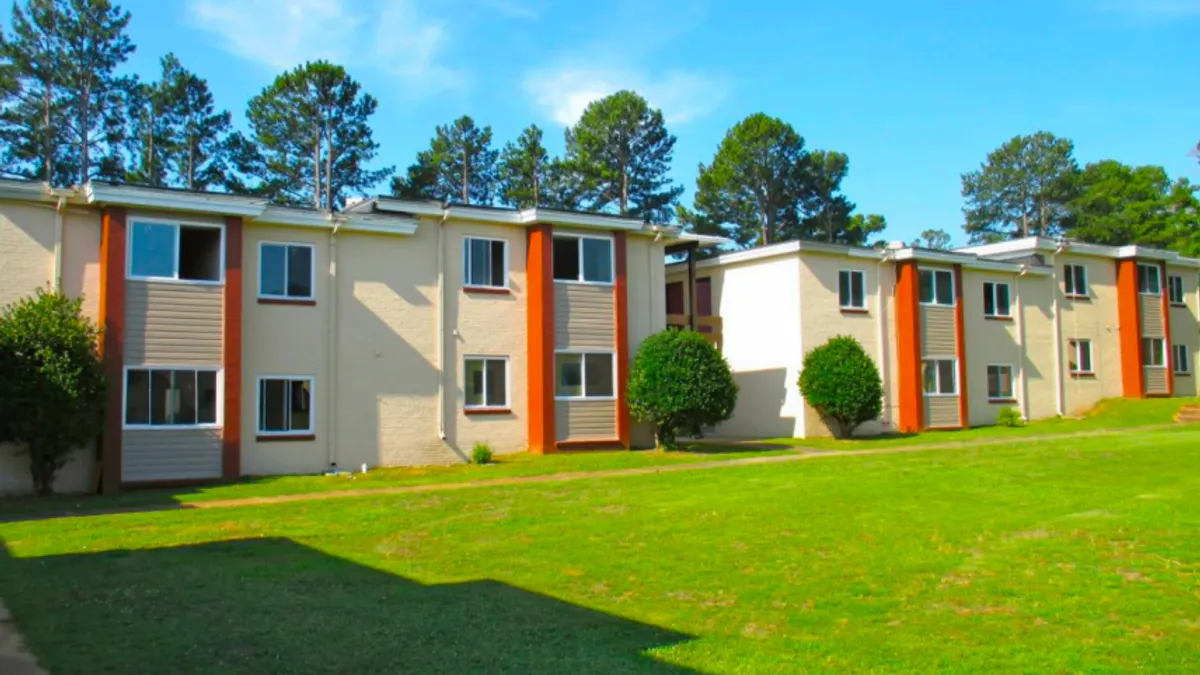Dive Brief:
- Starts for buildings with five or more units fell 11% month over month in August and rose 15.8% year over year to a seasonally adjusted rate of 403,000 apartments, according to the monthly report from HUD and the U.S. Census Bureau.
- Apartment developers pulled permits for a seasonally adjusted rate of 403,000 apartments in buildings with five units or more, matching the number of starts. That was a 10.8% YOY decrease and a 6.7% decline compared to July.
- Overall housing starts came in at a seasonally adjusted annual rate of 1.3 million in August — a 6% decrease YOY and 8.5% below the revised July estimate. Single-family starts clocked in at a rate of 890,000 homes, a 11.7% YOY fall and a 7% month-over-month decline.
Dive Insight:
At the end of August, 686,000 units were under construction, a 20.2% YOY drop and a 1% month-over-month decline. Multifamily developers finished an annualized 503,000 apartments in buildings with five or more units, a 28.7% YOY drop and a 10.8% month-over-month increase.
“We were starting to feel, I guess, better about the supply numbers,” Greg Willett, chief economist at Dallas-based lease insurance provider LeaseLock said. “The fourth quarter looks like it's going to be the first quarter in two and a half years when fewer than 100,000 units get delivered.”
These large YOY declines in completions are welcome news for apartment operators and developers. “On a national basis, it's obvious that the supply is dwindling down,” said Brian Austin, chief operating officer – East for Scottsdale, Arizona-based Alliance Residential. “The deliveries are declining.”
But even with the decline in supply, Austin sees a relatively stagnant development market through the end of 2025.
“I think after the first of the year, we're hopeful that capital will re-engage and increase their appetite for development,” Austin said.
Austin said the projects Alliance is currently starting should be successful.
“Those deals that we're able to get done will be the most successful deals that we do, just because we'll be hitting the market with these deals when there's a dwindling supply,” Austin said. “You're going to see rent growth and that.”
In addition, finding labor is easier than it was a couple of years ago, Austin said.
“Since there's not a lot of new construction, we will be able to get better pricing from our subcontractors and a better basis on those deals,” Austin said.
Click here to sign up to receive multifamily and apartment news like this article in your inbox every weekday.










